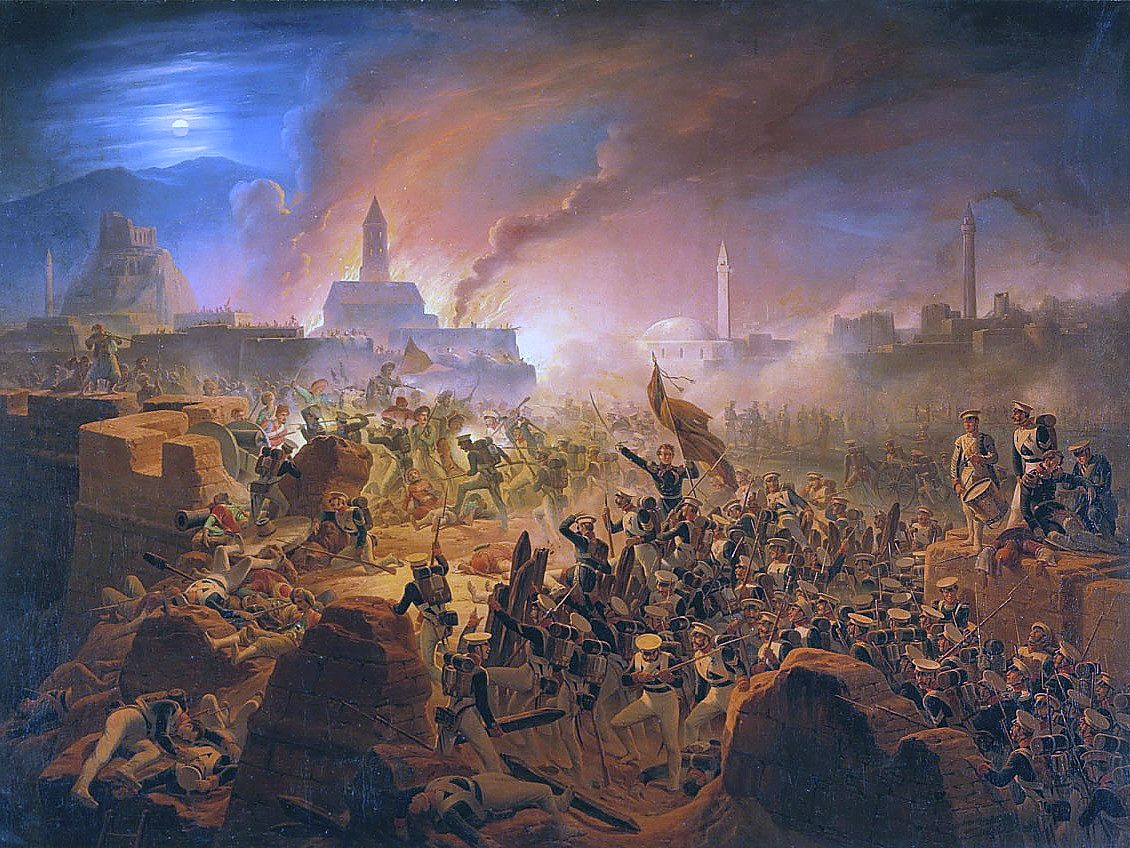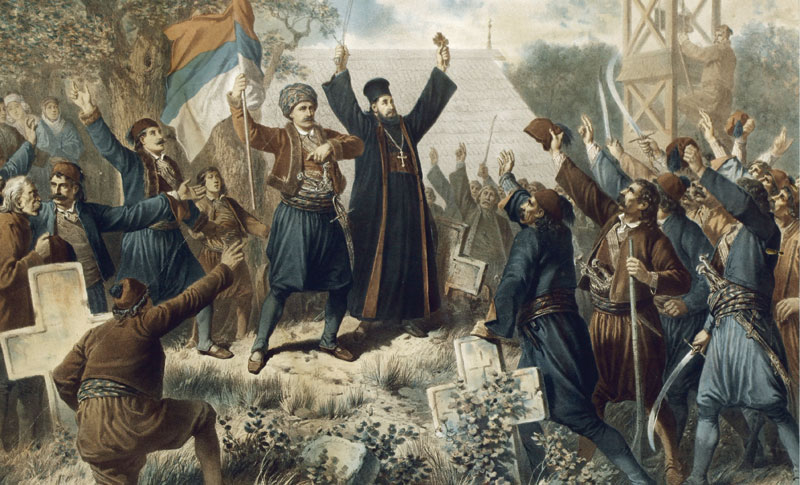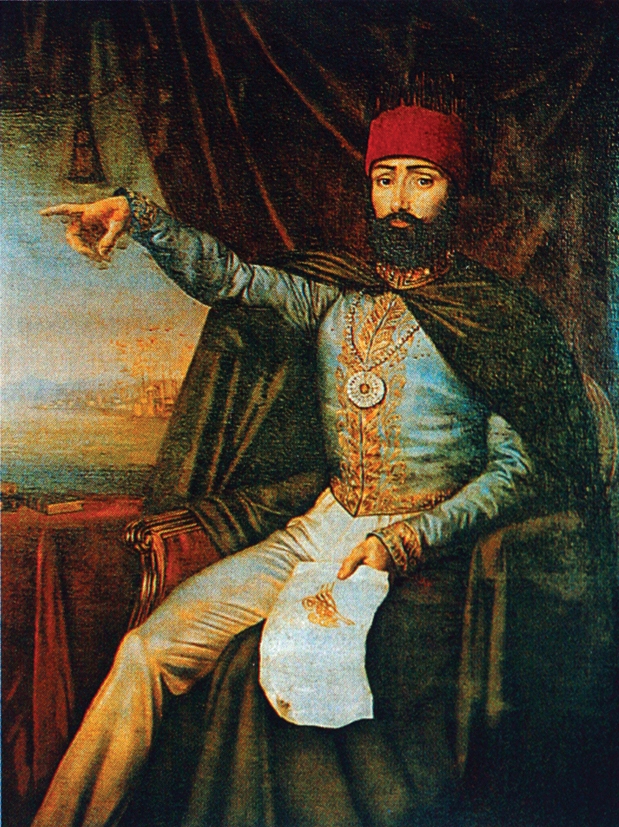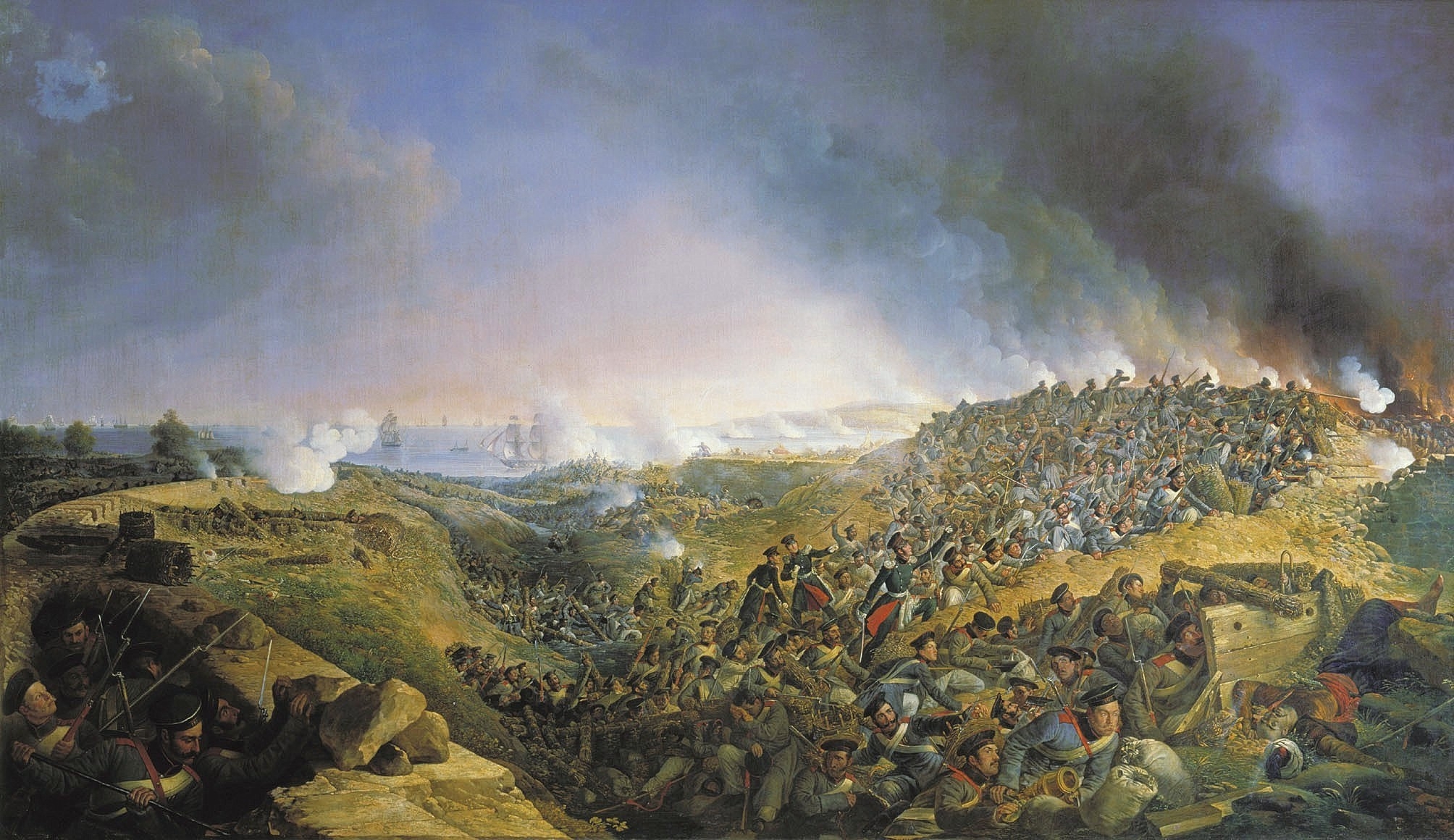Russian Revolutionary War
Part 3
The Sickman finally dies
Caucasus and Middle East Front
Abbas Mirza
Sultan Mahmud II
Muhammad Ali of Egypt
Ibrahim Pasha
Ivan Peskevich
The Start of the Ottoman Empire's ending- At this time the Ottoman Empire was the sick man in Europe. They were fighting a never-ending war in Greece to put down the rebellion there. With the help Eyalet of Egypt under the command of the ever bold Muhammad Ali they were making some gains. However, things about deteriorated fast for the Ottomans. Negotiations ended and Russia and Persia came to a compromise. The treaty of Gulistan was renegotiated. The treaty of Baku was signed. Persia would get back Azerbaijan. Russia would maintain Georgia and Armenia. Also, Russia would aid in modernizing their military as well. Plus Russia would aid Persia in future wars of conquest against the Ottomans. The Shah of Persia was the incompetent Fatah Ali Shah Qajar. However, his young reformer son Abbas Mirza who was the Crown Prince and heir to the throne was the opposite. Russian Historian Veltsin said “Fatah was incompetent and a poor leader for Persia. He represented everything wrong with the Qajar dynasty. However, his son was the complete opposite. He was a military man, reformer, hard worker and a simple man. He did the negotiation with Pestel in Tbilisi. Pestel and other Russian admired him.” Moscow wanted to use the Sunni/Shia divide in the Muslim world to defeat the Ottomans and take them out the war. Moscow also figured Persia would be a future asset for Russia. They could be used to expand Russian influence in the region and get a warm water port near British India. Pestel was a forward thinker. On January 12th, 1827 former adversaries Ivan Paskevich and Abbas Mirza were now united to fight the Ottoman Empire. In the fall Paskevich was given the duty to train the Persian Army. And it was in terrible shape. “The men had no rifle discipline. The commanders were only interested in drinking teas and playing chess rather looking at maps. When it came to war they tried to use chess tactics on a battlefield. Calvary was lacking. They had numerical numbers but they were not an army just an armed mob.” The invasion was planned by Paskevich. So he planned for an invasion of western Armenia. Russia saw this as an opportunity to take all of western Armenia from the Ottomans. The Persian force was 60,0000 while the Russian forces were 100,000. The combined 160,000 force moved to Western Armenia in January of 1827. This caught the Ottomans off-guard. The first battle was the battle of Van of which a force of 30,000 Ottoman soldiers faced down the vast invasion force and was crushed. The decisive battle of Erzurum was the bloodiest battle of the campaign. 60,000 Ottoman Turks against the 160,000 man force. The battle was bloody however the Persian/Russo force prevailed. Ottoman presence in Western Armenia was near collapse. Armenian militias rose up and welcomed Russian and Persian forces as liberators. The Ottoman empire was in great shock at how quickly and this alliance moved through Western Armenia with ease. The Ottomans withdrew from the Ukraine front in order to stop the bleeding. The feared that Russia and Persia were moving to take all of Anatolia and divide up. However Russian and Persian forces stopped their offensive once the city of Erzican was taken in a bloody siege in January 30th 1827. However, the Ottoman's woes were about to worsen in the Balkans.

Battleo of Erzurum
The Balkan Spring- The Balkans has always been a restive area under Ottoman control. One of the biggest sparks for rebellion was the Auspicious Incident. Under the leadership of Mahmud II, he defeated the rebellion. However remaining Janissary rebels fled to the Balkans. These Janissary reminders met with Christian Balkan leaders to come up with a plan. The start of the revolt was in Serbia. In started on a cold January day. January 28th, 1827 was the start of the third Serbian uprising or Serbian war of Independence. The revolt started with mass rioting. Cause of the rioting is unclear. Although reports from the ground stated a rumor was spreading of Ottoman soldiers in Belgrade raping Serbian young girls. The report was that the Ottoman soldiers were not punished, instead were given promotion. Now nobody knew where this rumor started. There is only a report of Ottoman soldiers who sexually assaulted a Serbian woman in Nich, however, he was discharged. Whether the story was true or not didn’t concerned the Serbs. Another rumor was that Ottoman forces were going around drafting Serbian young men to go fight their Russian, Armenian and Greek brothers. Rioting broke out in Belgrade and Sarajevo. Ottoman forces reacting badly due to low morale, being disillusioned, unmotivated to crackdown on the mobs. This ended in failure. Ottoman troops were chased out these cities and the surrounding areas. In one of surrounding towns, Ottoman troops massacred, raped and pillage Serbian people. This further enraged Serbian citizen and soon the entire region was in rebellion. Serbian militias took over abandoned Ottoman forts and armories. The fires of insurrection soon spread to other provinces. Bulgaria, Bosnia, Wallachia, Macedonia etc. The Balkan spring spread fast and was another event that caught the Ottoman Empire and Concert of Europe by surprise. For the Ottomans, this was a forest fire of that was getting out of control. The Ottomans were now facing a myriad of crisis and it seemed things couldn’t get much worse for them or the concert. But it did.

Third Serbian Revolution
Great Middle East war- Many scholars debate whether to separate the Great Middle East War with the Russian Revolutionary war. In any case, the Great Middle East war saw the end of the Ottoman Empire. At this time Cairo, Ishrarn, and Moscow were in communication with each other. Envoys of the three nations discussed in secret how to destroy their old enemy the Ottoman Empire. It was agreed how the land would be divided. Russia gets western Armenia. Persia gets Iraq and Kuwait. Egypt gets the Levant. As Russia was rampaging in Anatolia Persia strikes first. February 12th, 1827 Abbas Mirza with a massive force of 170,000 men marched to their first targets which were Kirkuk and Irbil. The Ottoman forces there were smashed to pieces. The road to Mosul was open. The siege of Mosul lasted 2 weeks in March 7th-24th. Mosul fell on the 24th. Abbas then set his sights on Baghdad. Meanwhile, Shiites in Basra, Karbala, Najaf, Samarra were rising in rebellion. The Ottoman forces in Iraq was near collapse. Murad II could do little as his forces were stretched thin in the Balkans and Anatolia. Baghdad fell on April 10th, 1827 with little resistance. Abbas Mirza quickly swept through the Shia heartland with little resistance. The battle of Tikrit was a battle in which the entire Ottoman forces of Iraq was annihilated. By May all of Iraq was under Persian Control. He moved further south to take Kuwait. The Shia sacred shines were now under Shia rule. Abbas Mirza empowered the majority Shia Arabs while treated the Sunnis with respect. However, the Shia Arabs were given preferential treatment and privileges. However, Abbas Mirza still wasn't satisfied and looked south into the Persian Gulf. Abbas Mirza wanted to unite the Shia world but also wanted the Persian Gulf to be the swimming pool of the Qajar Empire.

Abbas Mirza marching with his men to Mosul
Muhammad Strikes- Muhhamd Ali saw that the Ottomans were hemorrhaging territory he saw it as an opportunity to attack. He sent his son Ibrahim Ali to take the Bilad al-Sham. Ibrahim quickly took Palestine with little resistance. Th Egyptian forces numbered 80,000 but rose to 100,000 as defections from the Ottoman army switched sides. The only battle in Palestine was the battle of the Acre which had a powerful fortification. It was a bloody battle and took 17 days for the town to fall. In Syria, there were multiple engagements. The battle of Daraa Ibrahim won handily. He moved quickly in Southern Syria and set his sights in Damascus. The battle of Douma near the Outskirts of Damascus ensued on March 20th which the Ottman forces were handily crushed, He marched up north and took Homs at the Battle of the Orontes River. Homs fell on March 29th. Hama fell on April 5th. Aleppo April 15th. Ibrahim set his sights to southern Turkey. His forces engaged Ottoman forces near the battle of the Nezib River. He gave the Ottomans a devastating loss. He took over the provinces near Syria. Muhammad Ali then gave him orders to stop advancing. The loss of Southern territory would be a buffer for Ali. Mahmud II died of a massive heart attack after hearing the loss of Nezib River on May 10th 1827. His untimely death led to chaos in the remnant Ottoman rump state. The Ottoman Empire officially collapsed. This sent shockwaves all over Europe. Now Persia and Egypt were the major powers of the Middle East and were allies of Russia. Great Britain was greatly disturbed by this event. The fall of the Ottoman Empire and the rise of the Qajar and Pashian Dynasty would forever change the Middle East and the world.

Ibrahim Pashia commanding his forces at Nezib River.
 THis also means that Muhammad Ali will do his reforms uninterrupted which will do wonders for Egypt in the long run. Same with Persia. Which means the middle east will vastly be different. Will these two powers come to blows in the future? Who knows.
THis also means that Muhammad Ali will do his reforms uninterrupted which will do wonders for Egypt in the long run. Same with Persia. Which means the middle east will vastly be different. Will these two powers come to blows in the future? Who knows.











